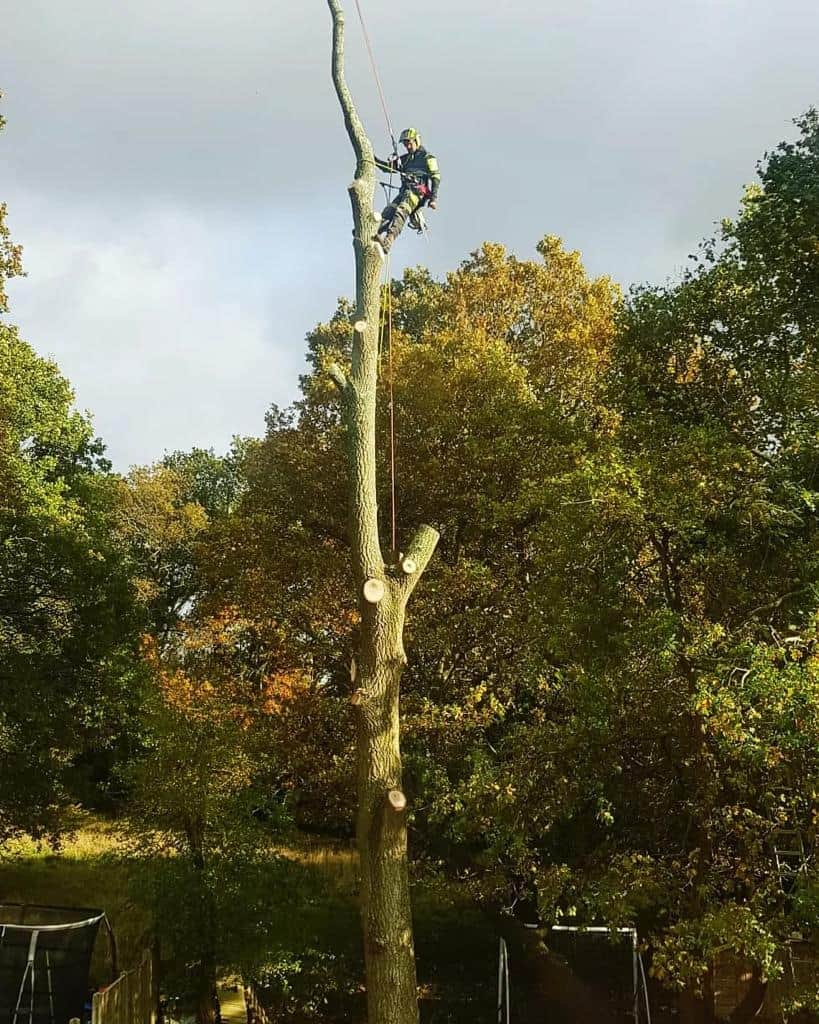Healthy trees are essential to the look, function, and ecological value of any landscape. However, without proper management, even well-established trees can become overcrowded, poorly ventilated, and vulnerable to disease. One of the most effective ways to support tree health and longevity is through professional tree cutting — specifically, selective pruning that enhances air circulation and limits the spread of fungal or bacterial infections.
At Roydon Tree Surgeons, we specialise in maintaining trees of all sizes throughout Roydon, Essex. In this article, we explain how targeted tree cutting not only improves airflow but also plays a key role in disease prevention and the overall wellbeing of your garden environment.
Why Air Circulation Matters in Trees
Trees, like all living organisms, benefit from good airflow. In natural forest settings, trees often grow tall and spaced in ways that naturally encourage air movement. In gardens, parks, or urban environments, however, trees may become overcrowded, pruned incorrectly, or surrounded by structures that restrict air movement.
Without adequate airflow, the following problems may arise:
- Moisture becomes trapped in dense canopies
- Leaves and branches dry slowly after rainfall or dew
- Poor ventilation encourages the growth of fungi, mould, and bacterial infections
- Insects and pests may thrive in stagnant, shaded conditions
- Weak branches become prone to failure in high winds due to excess weight or moisture retention
Improving air movement through strategic pruning reduces these risks, helping trees remain strong and resilient.
How Tree Cutting Improves Air Circulation
Tree cutting — when carried out professionally — is not about removing large amounts of growth, but rather refining the tree’s shape, density, and structure to support healthy development.
The key techniques include:
1. Crown Thinning
- Selective removal of small, internal branches to open the canopy
- Allows wind and sunlight to move freely through the tree
- Maintains natural shape while reducing bulk and density
2. Crown Lifting
- Removes lower branches to improve airflow near the ground
- Increases clearance for pedestrians, garden use, and lawn growth
- Reduces dampness around the tree base and prevents fungal root issues
3. Deadwood Removal
- Removing dead or decaying branches reduces blockage and improves air penetration
- Eliminates habitats for pests and disease-spreading organisms
- Enhances both safety and visual appeal
4. Selective Reduction
- Shortening specific limbs that contribute to congestion or poor structure
- Rebalances the tree and improves overall airflow across and between branches
Each of these methods must be carried out with care, respecting the natural form and species-specific growth patterns of the tree.
Diseases Linked to Poor Airflow
Many of the most common tree diseases in the UK thrive in still, damp environments. By improving air circulation, we reduce the conditions these pathogens need to take hold.
Common threats reduced by improved airflow:
- Powdery mildew – a fungal infection that spreads rapidly in dense canopies
- Leaf spot diseases – caused by bacteria or fungi, worsened by stagnant moisture
- Canker infections – often gain entry through weakened, unventilated branches
- Honey fungus – a serious underground infection often linked to decaying lower limbs
- Grey mould and rot – which may develop on shaded, moisture-laden bark or wounds
Preventative cutting is far more effective and cost-efficient than reactive treatment after a disease has taken hold.
Tree Cutting and the Surrounding Landscape
In addition to improving the tree’s own health, better airflow also enhances the conditions for surrounding plants and structures.
Benefits for the wider garden include:
- Increased sunlight reaching underplantings or lawns
- Less moss and algae growth on paths and patios
- Reduced moisture damage to fences, sheds, or decking
- Lower humidity around conservatories or garden buildings
Tree maintenance should be seen as part of a holistic garden care strategy, not just a one-off task.
Why Professional Tree Surgeons Are Essential
At Roydon Tree Surgeons, we approach tree cutting with precision and care. It’s not simply a matter of removing branches — it’s about understanding the biology of the tree, the impact of airflow, and the potential for structural weakness or infection if pruning is done incorrectly.
We provide:
- On-site assessments across Roydon, Essex
- Advice tailored to species, age, and environmental conditions
- BS3998-compliant pruning practices
- Safe removal and responsible waste disposal
- Ongoing maintenance plans for high-value trees or heritage specimens
Conclusion
Tree cutting is not just about shaping — it’s about safeguarding tree health through improved air circulation and disease control. By promoting airflow within the canopy, trees are better equipped to resist infection, thrive in changing weather conditions, and support the beauty and safety of your outdoor space.
Roydon Tree Surgeons offers expert tree cutting and pruning services throughout Roydon, Essex. Whether your trees need thinning, lifting, or professional advice on disease prevention, our experienced team is here to help. Contact us today to arrange a consultation and protect the long-term health of your trees.
Call us on: 01279 744 797
Click here to find out more about Roydon Tree Surgeons
Click here to complete our contact form and see how we can help with your tree care needs.

